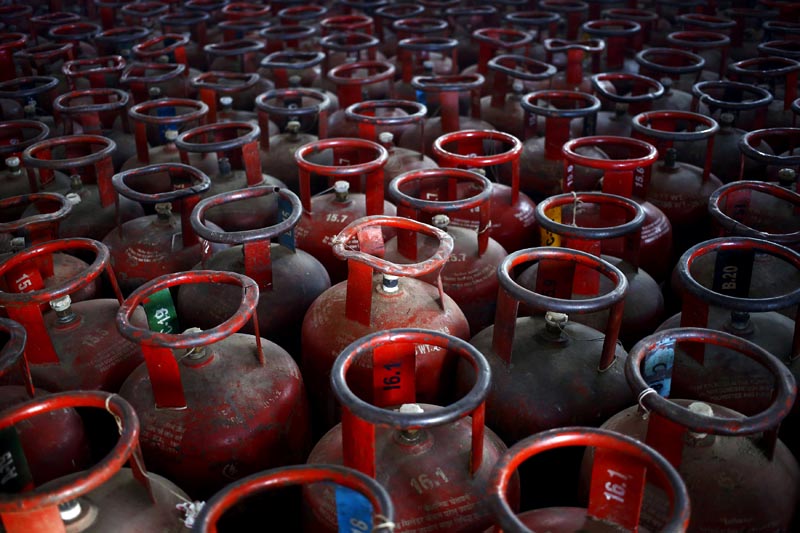Govt to start dual pricing for LPG
Kathmandu, January 13
The government has once again begun the process to implement the dual pricing system for liquefied petroleum gas (LPG), better known as cooking gas.
Following a direction from the Ministry of Industry, Commerce and Supplies (MoICS), the state-owned Nepal Oil Corporation (NOC) has begun the process to implement dual-colour LPG cylinders.
Under this system, the government plans to introduce LPG cylinders of two colours in the market — red and blue — and sell red cylinders meant for household use at subsidised rates and the blue colour LPG cylinders for commercial users like hotels and restaurants without any subsidy.
Though it has been more than eight years since the government announced about implementing the dual-colour cylinders in the market, NOC has not been able to enforce the dual pricing in LPG due to lack of enough homework and actual statistics on the consumption of LPG for household use and commercial purpose.
“The dual pricing system in LPG will be implemented in the near
future with due priority though it could not be implemented in the past. This will ensure that the subsidy being provided on LPG goes to the needy people,” said Minister for Industry, Commerce and Supplies Matrika Prasad Yadav.
Birendra Goit, spokesperson for NOC, informed that the corporation has begun the initial process to implement the dual colour cylinder system in the market. For this, NOC has started collecting the statistics on LPG being consumed for household use and other commercial purposes.
Implementing this system also requires classifying gas dealers, identification of the demand of LPG for household use and commercial purposes and developing a legal mechanism to monitor distribution of subsidised LPG cylinders, among other factors, as per NOC officials.
The government had tried implementing such system in 2013 and gas bottlers had even introduced the dual colour-coded cylinders in the market. However, the government was forced to roll back its decision after student unions affiliated with different political parties intensified protest activities citing lack of enough groundwork from the government. They alleged that the system was being introduced without any legal guidelines.
In 2011, NOC had been subsidising almost Rs 800 on a cylinder of LPG for consumers when its cost price was around Rs 2,200 per cylinder. NOC today provides Rs 80 per cylinder subsidy on LPG.
Currently, one LPG cylinder costs Rs 1,400 in the domestic market.






